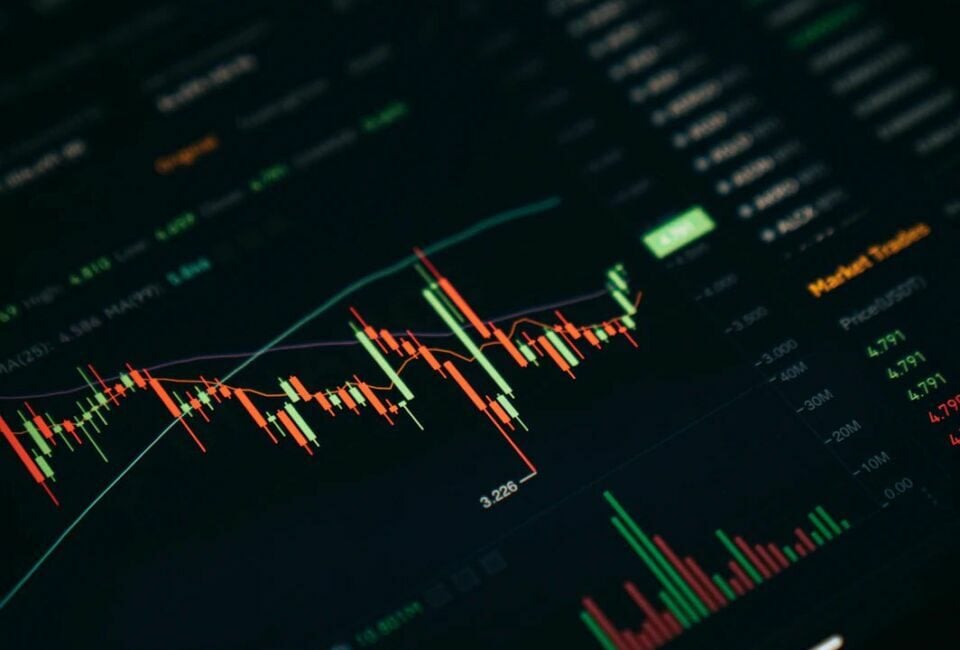Top 10 tips to manage trading risk

Many traders face the unfortunate reality of losing money without understanding their mistakes. Furthermore, the trading industry is flooded with overwhelming amounts of information, making it easy for traders to get lost in the noise. This is why implementing effective risk management strategies is crucial. So, how can we manage trading risk? With the help of our friends at IG, a leading trading platform, we’ve compiled the top 10 tips on managing your trading risk below.
10 Tips for better risk management in trading
1. Set exit points for your trades
One key way to effectively manage trading risk is by setting clear exit points for your trades. Using tools such as stop losses, you can protect yourself from adverse market movements that may result in significant losses. A stop-loss order helps you set a specific point at which a loss becomes unacceptable. If the market reaches this point, the stop order is triggered, and your position is closed. This preemptive measure prevents emotional decision-making and curtails potential losses before they spiral out of control.
Platforms like IG Trading offer comprehensive tools and features tailored to enhance risk management strategies effectively. You can easily set a stop-loss to automatically close out your position if the market moves against you, helping to limit potential financial damage.
In addition to regular stop losses, IG Trading also allows you to attach a guaranteed stop to your position. This provides an extra layer of protection by making sure that a position is closed at a specified price, regardless of any sudden market gaps. While there may be a fee attached to triggering a guaranteed stop, it offers peace of mind for traders seeking security in their positions.
2. Set limit orders to execute trades in favourable markets
Setting limit orders in trading allows you to execute trades at more favourable levels than current market prices. Limit orders can be divided into two: limit-entry orders and limit-close orders.
A limit-entry order lets you enter a trade at a better price, below the current level for long positions and higher for short positions. Conversely, a limit-close order enables you to close a trade at an advantageous price, higher for long positions and lower for short ones. However, there is a risk of orders not being filled if the market doesn’t reach your specified level, potentially resulting in expired orders or missed trade opportunities.
IG Trading offers the functionality to set both limit entry and closing orders. Thus, allowing you to optimise your trading decisions by capitalising on favourable market conditions.
3. Don’t overtrade
Overtrading can lead to significant losses. It often occurs when traders try to recoup previous losses quickly, leading to impulsive decision-making. This behaviour can turn trading into a gambling activity rather than a strategic investment approach. It’s important to remember that more trade does not necessarily translate to more profits. In fact, overtrading can lead to significant losses and expose you to greater risks. Additionally, it can result in higher transaction costs, eating into your potential profits.
By avoiding overtrading, you can maintain discipline and focus on quality trades rather than quantity. It allows you to make rational decisions based on analysis and strategy rather than emotions or impulses. Keep in mind that successful trading is about long-term profitability and consistency, not just chasing short-term gains through excessive trading. So take a step back, assess your trading habits, and ensure you’re not falling into the trap of overtrading for the sake of quick wins.
4. Diversify your portfolio
Diversifying your portfolio is a crucial step in effective trading risk management. It involves spreading your investments across different industry sectors, market capitalisations, and geographic regions to avoid being overly exposed to any single asset or market condition. By diversifying your portfolio, you can protect yourself from significant losses that may occur if one investment underperforms. Aside from helping you mitigate risk, it also exposes you to a broader range of opportunities in the market.
5. Keep a close eye on market movements
To effectively manage trading risk, it’s essential to remain informed and proactive. Staying on top of market movements is crucial for successful decision-making. By understanding the current trend of the market – whether it’s trending or ranging – traders can strategically implement appropriate risk management strategies.
When the market is trending, traders may consider adopting techniques such as trailing stop losses to protect profits and limit downside risk. On the other hand, during ranging markets, employing tighter stop-loss orders can help safeguard against sudden price fluctuations and unexpected reversals. By adapting risk management approaches based on the prevailing market dynamics, traders can enhance their overall portfolio protection while maximising potential returns.
A good trading platform should help you keep track of market movements. IG’s trading platform, for example, allows you to set personalised alerts that notify you when a market hits specified levels. These alerts serve as a valuable aid in maintaining awareness of potential risks and opportunities as they arise.
6. Stay on top of economic news and events
Keeping track of economic news and events that can affect currency values and the market is an important part of risk management in trading. Economic indicators, geopolitical developments, and major news can cause fluctuations in the market, presenting both opportunities and risks. Stay informed by regularly checking reputable financial news sources, economic calendars, and market analysis reports. In line with tip number 5, this awareness empowers you to make informed decisions, anticipate market trends, and adjust your trading strategies according to the changing economic landscape.
7. Find a platform with negative balance protections
If you really want to manage your trading risk, consider using a trading platform that offers negative balance protections like IG’s trading platform. With this safeguard in place, you can rest assured that your account will never slip into a negative balance, even in scenarios where the market experiences sudden and drastic gaps. This protective measure applies across all retail client accounts on the IG’s trading platform. Thus, it provides security to traders of varying experience levels.
8. Stay away from FOMO
Next on our trading risk management tips is to avoid FOMO. New traders often fall victim to FOMO, or Fear Of Missing Out, a common pitfall that can lead to impulsive decision-making. When the market opens, the temptation to act quickly without a solid plan in place becomes strong. To counter this, it’s crucial to meticulously plan out trades in advance. By doing so, you can approach the market with confidence and objectivity. In addition to planning your trade, it’s also important to be disciplined to avoid falling prey to emotional impulses that can lead to poor choices.
Moreover, it’s vital to have predetermined exit points before entering a trade, as this helps safeguard your account against potential losses. Traders using leveraged products like Contracts For Differences (CFDs) must exercise caution, as leverage can amplify both gains and losses. Utilising demo accounts before risking real capital can provide valuable practice and help acclimate traders to the complexities of leveraged trading.
9. Don’t risk what you can’t afford to lose
Remember that trading involves inherent risks, and no strategy can guarantee profits all the time. Therefore, before making any trades, it’s crucial to assess your financial situation and determine how much capital you are willing and able to put at risk. By determining how much you can comfortably afford to lose, you can protect your investment portfolio, as well as mitigate potential financial strain and emotional stress. Losing money can be a traumatic experience, especially if it involves capital that should never have been put at risk in the first place.
10. Put in the effort to educate yourself
Always put in the effort to learn and grow as a trader, so you can increase your chances of achieving better results. Remember that improvement comes from actively seeking out opportunities to expand your knowledge base and refine your trading strategies.
You don’t always pay for expensive training or workshops. You can always take advantage of free educational materials to elevate your expertise and develop a deeper grasp of market dynamics. Accessing resources such as the IG Academy, offered by IG, can serve as a valuable tool in expanding your understanding of trading concepts.
Educating yourself also includes studying both successful and unsuccessful trades with equal diligence. Analyse the reasons behind any failures to identify areas for improvement and prevent similar mistakes in the future. Ask yourself critical questions like why you may have overridden a stop loss or entered a trade that did not meet your criteria.
Incorporating these 10 risk management tips into your trading strategies can significantly improve your chances of success.
Start your trading journey with IG, a trading platform that has been trusted by traders for over 50 years. Whether you’re a beginner trader or a professional, you’ll benefit from access to more than 17,000 global markets while enjoying useful educational tools and seamless funding and withdrawal options. Plus, the user-friendly platform ensures that every aspect of your experience is intuitive and stress-free.
For more information, visit IG’s website.
Sponsored by IG. CFDs are complex, high risk and losses can be substantial. 70% of retail client accounts lose money when trading CFDs with this investment provider.
Latest Thailand News
Follow The Thaiger on Google News:


























